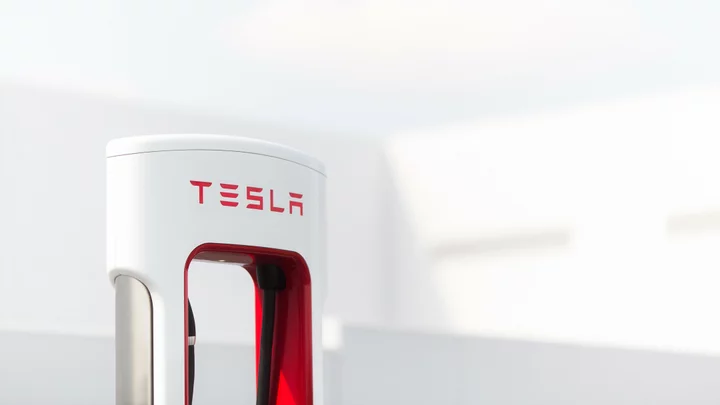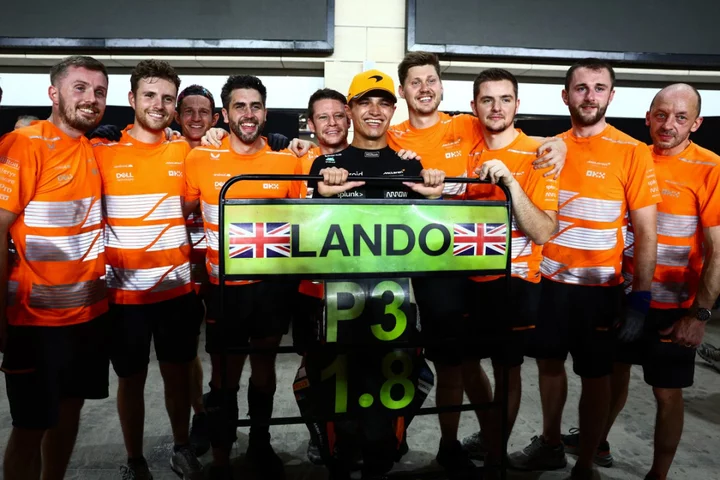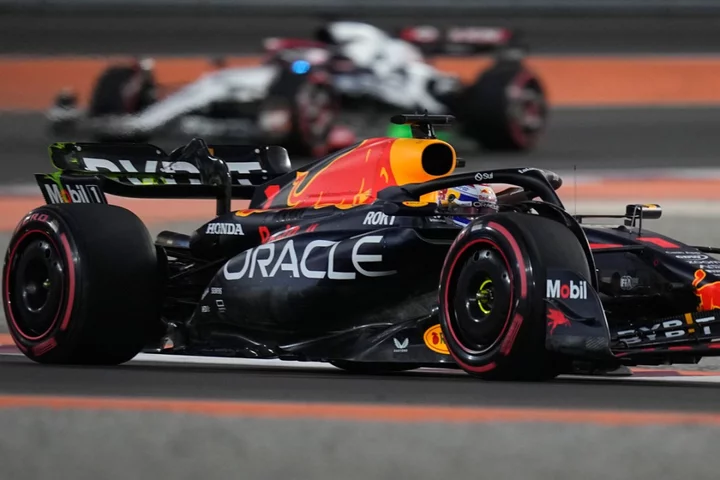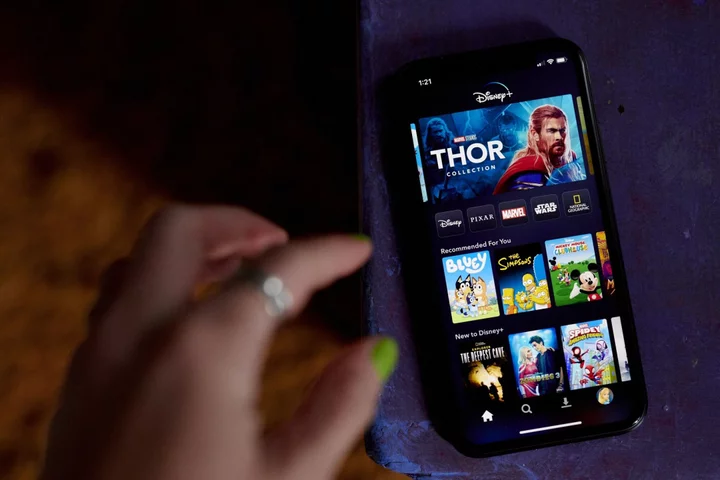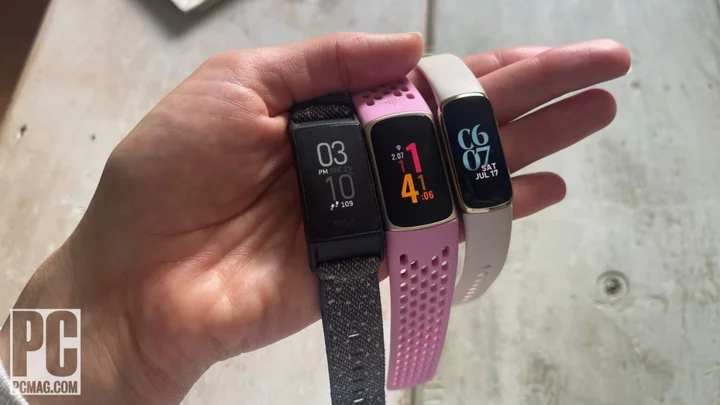A major shift in the EV industry is making charging ports a key factor when choosing which electric vehicle to buy, or for getting the most out of one you already own.
In the past month, four major EV brands have said they'll switch to Tesla's charging port: Ford, General Motors, Rivian, and Volvo. Starting in 2024, drivers will have access to 12,000 Tesla Superchargers via an adapter. Each brand will display available Tesla chargers in their mobile apps and via in-vehicle navigation systems.
In 2025, it gets even more serious, as these brands will build Tesla-backed North American Charging Standard (NACS) ports directly into their vehicles. At that point, charging at a Combined Charging System (CCS) station will require an adapter. Here's how we got here, and what it means for current and future EV drivers.
NACS vs. CCS: Battle of the Charging Ports
For the past few years, there has been a clear division between the plug type on Teslas and non-Teslas: Teslas have a custom plug—the NACS—and non-Teslas have the CCS port. It's similar to the mobile phone industry, with Lightning ports on iPhones and USB-C on other brands.
CCS and NACS work the same way. Both plug into an external port on the vehicle similar to refueling a gas-powered vehicle. But the NACS port is noticeably smaller and sleeker than CCS.
NACS ports are smaller than CCS.Tesla has been experimenting with ways to bring its charging technology and network to non-Tesla drivers for years. In Europe, it has opened many Superchargers to non-Teslas via an adapter. In the US, efforts have been piecemeal. In October 2022, it released a level 2 home charger that works with non-Teslas. But its American Supercharger network was still exclusive to Tesla drivers at that point, as it requires Tesla's proprietary port to use.
Only a handful of US chargers are open to non-Teslas. There are many more in Europe.In November 2022, Tesla launched a campaign to make its port the national standard, supplanting CCS. It published the manufacturing specs, invited other automakers to adopt it, and dubbed it the NACS. No brands immediately jumped at the opportunity.
In February 2023 Tesla signed a deal with the Biden Administration to open a portion of its network to non-Teslas, which has led to a handful of Superchargers becoming available to non-Teslas in the Northeast and California. Tesla plans to open 3,500 Superchargers to the public—regardless of make or model—by 2024 as part of that agreement, as well as thousands of its slower, level 2 chargers.
The tide turned in May 2023, when Ford became the first automaker to take Tesla up on its offer to build EVs with its charging port in 2025, with access to Superchargers beginning in 2024. Others followed: General Motors (GM), then Rivian, and Volvo, all within a month of Ford.
Now that these brands have signed deals with Tesla, it seems true Supercharger access will only come for US drivers through direct agreements with manufacturers—not the federal government. The next decade will prove if CCS can hold on to a share of the pie, or if NACS will fully supplant it as the national standard, which is something the Society of Automotive Engineers is evaluating, Reuters reports.
38% of US Public Fast Chargers Are Superchargers
There are an estimated 31,255 public fast chargers in the US, according to the US Department of Energy, from a smattering of brands such as ChargePoint, Blink, Electrify America, and EVgo, several of which have committed to building fast charging stations with Tesla ports.
Those with cars from brands that have partnered with Tesla will have access to 12,000 Superchargers, or 38% of the national network. The 12,000 are the best and most powerful chargers in Tesla's network, however, known as V3 Superchargers.
Having access to 38% of the national fast-charging network that was previously exclusive to Tesla drivers is a major win for non-Tesla drivers. While 80-90% of EV charging currently occurs at home, the limited public infrastructure has been a consisting sticking point in achieving widespread EV adoption.
Superchargers Are Usually More Reliable, Well-Placed
Anecdotally, many EV drivers have found Tesla Superchargers to be more reliable than CCS chargers. They seem to be everywhere: At grocery stores, rest stops, shopping malls, and more. They are also more likely to work as expected upon arrival, Tesla says in the video below, meaning fewer times when drivers arrive at a station only to be met with inoperable charging stations. However, we lack data on how Tesla's reliability compares to other charging companies.
Once the brands that have partnered with Tesla for Supercharger access build NACS ports directly into the vehicle in 2025, Superchargers will likely become the default charging option. CCS usage may decline, but that doesn't mean non-Tesla charging companies will go out of business, as the major ones are embracing NACS too. The Biden administration recently extended federal funds to EV chargers that have NACS ports, instead of just CCS, and multiple states are now requiring them.
List of EVs With Supercharging Access
Here are the EVs currently offered by Ford, General Motors, Rivian, and Volvo that will be compatible with Superchargers starting in 2024. The entire Tesla lineup will also still be available, of course. Base model and pricing shown, as of June 2023.
Tesla
Tesla LineupTesla Model 3 (PCMag Editors' Choice): $40,240 (before $3,750 federal tax credit), 272-mile range
Tesla Model Y (PCMag Editors' Choice): $47,490 (before $7,500 federal tax credit), 279-mile range
Tesla Model S: $88,490, 405-mile range
Tesla Model X (PCMag Editors' Choice): $98,490, 348-mile range
Upcoming Launches: Cybertruck (TBD launch date, 2024 or 2025)
Ford
Ford F-150 LightningMustang Mach-E (PCMag Editors' Choice): $42,995 (before $3,750 tax credit), 250-mile range
F-150 Lightning (PCMag Editors' Choice): $59,974 (before $7,500 tax credit), 240-mile range
Rivian
Rivian R1SRivian R1T (PCMag Editor's Choice): $73,000 (before $3,750 tax credit), 270-mile range
Rivian R1S: $78,000 (before $3,750 tax credit), 260-mile range
Volvo
Volvo C40 RechargeVolvo C40 Recharge: $55,300, 226-mile range
Volvo XC40 Recharge: $53,550, 223-mile range
2024 EX30: $34,950, 275-mile range (pre-order only)
Upcoming launches: 2024 EX90 7-seat SUV
Chevrolet (GM)
Chevy Bolt EUVChevrolet Bolt EV: $26,500 (before $7,500 tax credit), 259-mile range
Chevrolet Bolt EUV: $27,800 (before $7,500 tax credit), 247-mile range
Upcoming launches: 2024 Chevrolet Equinox, 2024 Chevrolet Blazer, 2024 Chevrolet Silverado
Cadillac (GM)
Cadillac LyriqCadillac Lyric: $58,590, 314-mile range (waitlist full for 2023)
Upcoming launches: 2024 Cadillac Celestiq ($300,000 starting)
GMC (GM)
Hummer EV Pickup Truck and SUV: Reservations currently closed until further notice.

